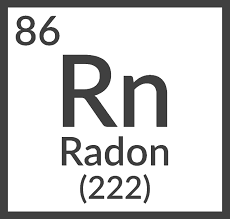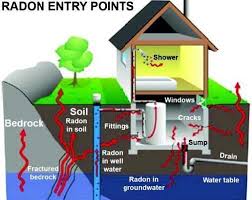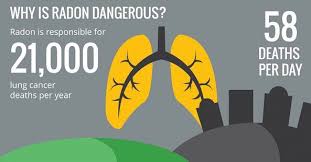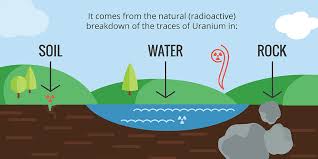Radon Testing
Radon Testing
What is radon?
Radon is an odorless, colorless and tasteless naturally occurring radioactive gas that is in the air you breathe and the water you use for drinking, bathing and cooking. At high
How does radon get into my home?
Radon gas can seep into your home from the soil beneath it through dirt crawlspaces, cracks in the foundation and walls, floor drains, pipes and sump pumps. If you get your drinking water from a well, it can also be a source of radon in your home.
I do not live in an area with high radon, am I safe?
Not necessarily. Even homes in areas considered at low risk for radon can have high radon levels. About 15 percent of homes in the U.S. have radon levels above the 4.0 pCi/L, the level at which the EPA recommends fixing your home. Although no absolutely safe level of radon has been determined, by following the EPA recommendation or the World Health Organization’s recommended level of 2.7 pCi/L, you will be helping to protect yourself and your family. The only way to know whether to fix your home is to test it for radon.
Radon FAQs
I have a new home with no cracks or other openings, so why should I test for radon?
As a gas, radon can seep through tiny cracks that you might not even see. It can get into finished or unfinished basements, and into new homes as well as old. You won’t know if it’s in your home unless you do a radon test.
The builder says my new home is radon-resistant, so I can’t have radon, right?
Even if you have purchased a home with Radon Resistant New Construction (RRNC), unless you, the builder or a home inspector tested your new home for radon, that’s not necessarily so. Although the name Radon Resistant New Construction implies that the home resists radon, RRNC simply is the installation of radon system pipes without a radon mitigation fan. Without the fan, the home is “radon system ready,” but not resistant to radon entry.
If radon is a health hazard, what are the symptoms?
Radon is a sneaky gas. Just as you can’t see it, smell it or taste it, it also gives you no warning that it is harming your health. There’s no rash or a headache or fever. Radon causes lung cancer, which often presents no symptoms until it is advanced. The only way to be safe from radon-related lung cancer is to test for radon and have the radon mitigated if the level is above 4.0 pCi/L.
Is there really any proof that radon causes lung cancer?
As with most illnesses, cause and effect cannot be 100 percent proved. If you have high blood pressure and suffer a stroke, studies indicate that your high blood pressure is the most likely cause. Similarly, epidemiological studies have presented compelling evidence that radon is the number one cause of lung cancer in nonsmokers – and that smokers who are exposed to high radon levels are 10 times more likely to get lung cancer. The National Cancer Institute says that radon is associated with 15,000 to 22,000 lung cancer deaths each year.
How can radon in my well water enter my home?
When you run your water – for drinking, cooking, bathing or when running your dishwasher or washing machine – radon gas escapes from the water into to the air, adding to the radon level of the air you breathe. The major danger of radon in water is inhalation; however, there is also
How do I find a Professional Radon Mitigator?
When you hire a radon professional referred by our Find a Radon Professional tool, you will receive quality work performed by a qualified, experienced professional. All radon mitigation contractors in our referral service are nationally or state certified and/or licensed (where required) and are insured so you can feel confident in the quality of their knowledge and service.
Visit www.radonaway.com/findpro to get started.
How do I test for radon?
You can either test your home yourself or hire a certified radon testing professional. If you choose a do-it-yourself home radon test, you have several choices, starting with a short-term or long-term test. Most homeowners choose a short-term, 48-hour home radon test kit. They are easy to use and come with step-by-step instructions. A long-term test device, called an alpha track, is left in place for 3 to 12 months before you send it to the laboratory for analysis. A radon testing professional will use one of these devices or an electronic continuous radon monitor to test your home.
What is a High Radon Level?
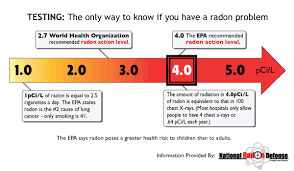 There really is no safe level of radon exposure. Radon gas is measured in picoCuries per liter (pCi/L). The current airborne radon level at which the EPA recommends action is 4.0 pCi/L. Further, the EPA says to consider action if the level is 2 to 4 pCi/L and suggests that every home and workplace be tested for radon gas in the air.
There really is no safe level of radon exposure. Radon gas is measured in picoCuries per liter (pCi/L). The current airborne radon level at which the EPA recommends action is 4.0 pCi/L. Further, the EPA says to consider action if the level is 2 to 4 pCi/L and suggests that every home and workplace be tested for radon gas in the air.
Radon concentrations often are much higher in water than in air. As a general rule, a measurement of 10,000 pCi/L of radon in well water will contribute 1.0 pCi/L throughout the household air. However, this may vary depending on the amount of water used, the air exchange rate of the building and the proximity of an airborne test to the point of water usage. The Safe Drinking Water Act Amendment of 1996 mandates the adoption of municipal guidelines. It is believed that the final maximum contaminant level for radon in municipal well water will be between 300 and 4,000 pCi/L. State recommendations for waterborne radon vary, so check with your state radon office for information.
What are Factors That Can Affect Radon Levels?
Several factors can influence your radon test results. Keep in mind, however, that although radon gas levels might vary somewhat from one day-to-day, it is unusual for the difference to be significant. If you doubt your test results, you might choose to retest yourself or hire a certified professional. Here are some suggestions to help ensure an accurate reading:
Time of year – Radon levels usually are highest during the heating season. If you are performing a long-term test, choose a time period that will span heating and non-heating seasons.
Test location – The EPA recommends testing for radon in the lowest livable level of your home, where radon levels usually are highest in the home.
Weather patterns – Do not conduct a short-term test during conditions that can influence the test results, such as stormy weather or very high winds.
Test interference – Do not move the test device or open doors and windows during the test, as these actions can result in understated radon levels.
What do I do if my radon test result is high?
Contact a certified professional radon contractor (mitigator).
Can I fix the radon myself?
Remember, this is a radioactive gas. Fixing your home is best left to a professional.
What will a radon contractor do to fix the radon?
Based on several factors, including your home’s construction, the type of soil beneath your home, whether you have a finished basement or a crawlspace, the climate in which you live, and so on, the contractor will design a radon mitigation system that will draw the radon gas from beneath your home and safely vent it above the roofline, reducing the radon level to below 4.0 pCi/L. Usually, the system installed will be what is called an active soil depressurization (ASD) system. Before installing the ASD system, the mitigator will seal all major cracks, drains, sumps and crawlspaces. The basic components of an ASD system are:
- One or more small holes called suction or draw points
- PVC pipe inserted into the hole(s) and run either through the basement wall to the exterior of your home or up through the interior into the attic and extended above the roofline
- A specially designed radon fan attached to the pipe electrically wired
- A u-tube manometer attached to the pipe to monitor the operation of the fan
What happens after the radon is fixed?
The radon mitigator will retest your home to make sure the radon level is reduced adequately. To keep the radon level down, the radon fan must run continuously, so don’t turn it off or unplug it. Check the u-tube monitor from time to time to see if your system is operating properly, and test your home and test your home every 2 years to make sure the radon level remains low. It is normal to have minor fluctuations in the radon level.
Sheboygan, Fond du Lac, Manitowoc, and Ozaukee. We’ll Inspect It.
Serving Your Local Area
Contact

Brian Hilbelink
Owner
Hill Top Inspection Services
2725 Rolling Meadows Drive
Sheboygan, WI 53083
Give us a Call
Usually we can answer right away, but if we don't, leave a message and we will make sure to get back to you promptly.
Need an inspection?
Fill out our Inspection Request Form and We'll get back to you promptly.
